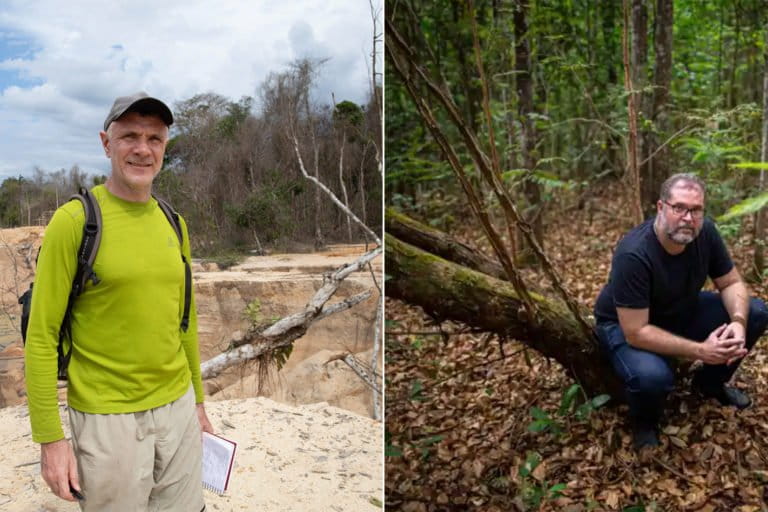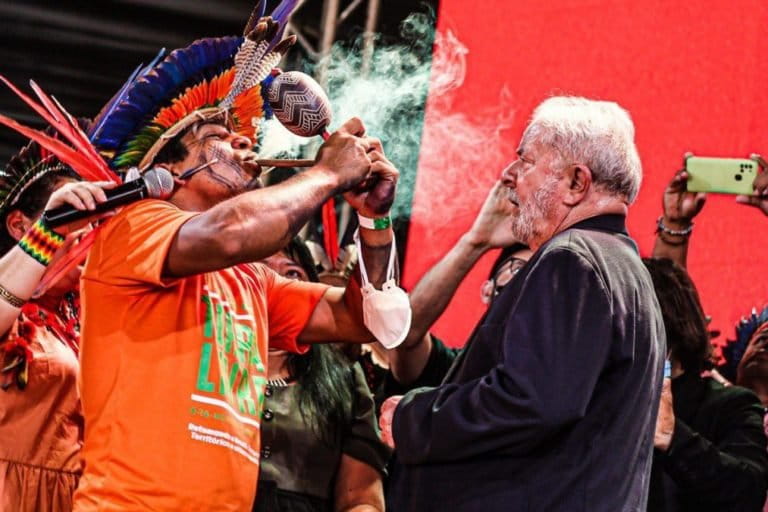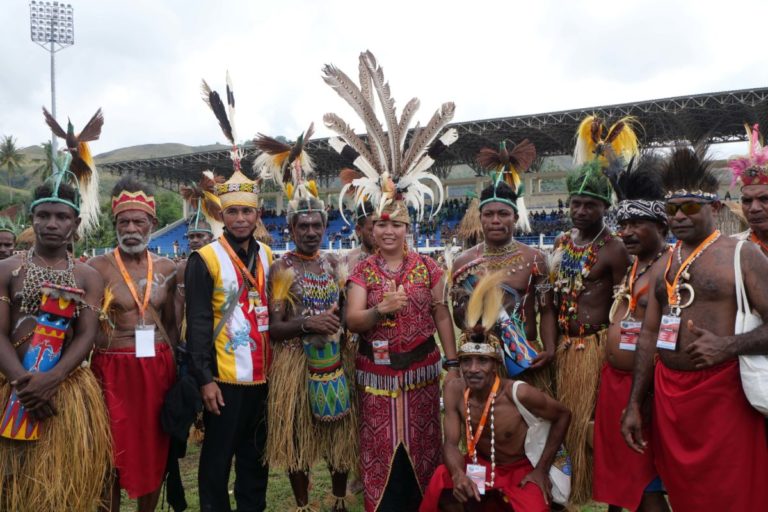- This year was a historic one for many Indigenous communities around the world that marked many ‘firsts’ with successful land rights rulings, both on the global and national level.
- As Indigenous rights, roles and contributions in biodiversity conservation gain more attention, underreported and critical issues impacting Indigenous peoples were thrust into the spotlight this year.
- To end this impactful year, Mongabay rounds up its 10 most notable Indigenous news stories of 2022.
This year ended with a big bang for many Indigenous leaders, communities and activists around the world.
During the U.N. biodiversity conference, known as COP15, Indigenous traditional lands and rights were successfully incorporated into the final global agreement to halt and reverse biodiversity loss after more than two years of campaigning. Indigenous leaders fear being evicted and losing more of their traditional lands to newly created protected and conserved areas through the agreement’s infamous ’30 by 30’ target protecting 30% of land and marine areas by 2030.
Once the agreement was cinched on December 19, Indigenous delegates were among the attendees celebrating what they dub a “major shift” in recognizing their rights and role as among the world’s most effective environmental stewards.
“It’s historic. It’s a moment to celebrate,” said Jennifer Tauli-Corpuz, a representative of the Indigenous caucus (IIFB) at COP15.
However, this was not the only notable story that marked Indigenous communities around the world in 2022. As Indigenous peoples gain more global attention and the climate and biodiversity crises advance onto their territories, Indigenous communities, along with their struggles, conservation successes and conflicts are further thrust into the spotlight.
From a historic number of Indigenous candidates elected in Brazil’s elections to a new cycle of investigations into Indigenous people killed in a national park, Mongabay presents its 10 most notable Indigenous news stories from 2022.
1. Indigenous youths lured by the illegal mines destroying their Amazon homeland

In a story produced with the support of the Rainforest Journalism Investigations Network (RIN) of the Pulitzer Center, Mongabay looks at the underreported and complex topic of Indigenous youth working in illegal mines.
An increasing number of young Indigenous people from Brazil’s Yanomami Indigenous Territory are leaving their communities behind and turning to illegal gold mining, lured by the promise of small fortunes and a new lifestyle.
According to Indigenous leaders, the structures, traditions and health of Indigenous societies are torn apart by the proximity of illegal gold miners near their villages, and the outflow of the young generation further fuels this vicious cycle.
Work in the camps, where they often are lodged, ranges from digging and removing tree roots to operating as boat pilots ferrying gold, supplies and miners to and from the camps. Recruits receive nearly $1,000 per boat trip, with internet access, brothels, alcohol, drugs and food available in the camps.
Mining involves the use of mercury, a toxic metal when at high exposure, which sinks into the river and contaminates the communities’ drinking water and fish. High exposure to mercury can lead to severe neurological abnormalities, premature births and birth defects. Nearby communities now refuse to fish.
Sex work and the sexual exploitation of young Indigenous women and girls is also a pressing issue in the illegal mining camps.
Read more: Illegal miners bring sexual violence and disease to Indigenous reserve in Brazil
Read more: Divisions within Indigenous communities on the topic of mining
2. Tanzania, siding with UAE firm, plans to evict Maasai from ancestral lands

In northern Tanzania, more than 70,000 Indigenous Maasai residents are facing the reality of eviction from ancestral lands as the government revealed concrete plans to lease the land to a UAE-based company. The aim is to create a wildlife corridor for trophy hunting and tourism. Plans to use the land as a designated hunting and conservation area has been in the works since at least the 90s.
The land is vital for Maasai pastoralists, who have sustainably stewarded the area for generations, according to the Oakland Institute.
In January, Maasai leaders filed an appeal at the East African Court of Justice (EACJ), seeking a halt to all plans for the area and calling the renewed attempt to seize the land a blatant violation of the court’s injunction that barred the government from evicting Maasai communities in a case that involved violent evictions. Since then, a violent confrontation struck between Maasai leaders and police when the latter sought to demarcate the land in June.
According to sources, the regional commissioner of the region told Maasai leaders that the leasing of the land is in the national interest to increase the country’s tourism revenue and was a tough decision for the government to make.
Read more: Maasai protesters shot, beaten as Tanzania moves forward with wildlife game reserve
Read more: Maasai villages lose important court case as wildlife game reserve trudges on
3. Deaths of Phillips and Pereira shine light on a region of the Amazon beset by violence

The missing cases and deaths of Brazilian Indigenous rights defender, Bruno Pereira, and British journalist, Dom Phillips, made global headlines this past summer. Pereira previously headed the office dealing with isolated Indigenous groups under Funai, the federal government agency for Indigenous affairs. Pereira was travelling with Phillip who was conducting research and interviews for his book about saving the Amazon.
On June 15, Brazilian police reported that they had found the bodies believed to be those of Brazilian Indigenous defender Bruno Pereira and British journalist Dom Phillips deep in the western Amazon. On June 22, forensics confirmed it was the two missing people. The bodies were found not far from where the pair disappeared on June 5, in the Vale do Javari region, considered the most violent region of Brazil, where illegal loggers, poachers and drug traffickers vie to seize land from, or plunder the resources of, the traditional riverine communities and Indigenous groups living there.
The region includes a massive Indigenous reserve of the same name, the Vale do Javari Indigenous Territory, home to 6,000 Indigenous people. It also has the largest number of isolated Indigenous groups anywhere in the world, believed to number about 17, who have had very little to no contact with the outside world.
Similar conflicts occur all over the Amazon, with some land grabbers admitting that they will, if necessary, use violent methods to achieve their goals.
4. After 14 years of advocacy, the DRC president finally signs new Indigenous peoples law (commentary)

Patrick Saidi Hemedi, the coordinator of the Dynamique des Groupes des Peuples Autochtones (DGPA) in the DRC, writes a commentary for Mongabay hailing a touchdown for many Indigenous advocates in the country.
On November 16, the president of the DRC, Felix Antoine Tshisekedi, signed and promulgated the new law on the Promotion and Protection of the Rights of the Indigenous Pygmy Peoples. For the country’s Indigenous pygmy people, this is the first time that they are legally recognized as a distinct people with rights and access to free, prior and informed consent before the government and industries can exploit their land.
Conservation policies, legislation and the establishment of national parks tend to criminalize and exclude Indigenous Peoples and local communities from their customary lands, which has led to mass evictions and reported murders (as reported in Salonga, Virunga and Kahuzi-Biega national parks). Patrick Saidi Hemedi, who worked to get the protections enshrined into law, is hopeful the new law will reverse this.
However, not everything will change in the blink of an eye and implementation of the law will take time, he says.
Read more: Rangers in DRC gorilla park abused Indigenous villagers, report says
Read more: A conservation paradigm based on Indigenous values in DR Congo (commentary)
5. Brazil’s biggest elected Indigenous caucus to face tough 2023 Congress

During Brazil’s fraught, charged and suspenseful elections in October, five self-declared Indigenous candidates were elected as federal deputies and two as senators. This is the highest number of Indigenous candidates elected to the National Congress in the country’s history. The most celebrated victories among Lula’s supporters were those of prominent Indigenous activists Sônia Guajajara and Célia Xakriabá, who were elected as federal deputies.
A record 186 candidates who self-declared as Indigenous ran in Brazil’s general elections, up 40% from the 2018 elections.
Experts, activists and celebrities called on the “Bancada do Cocar” (Feathered Headdress Caucus) to halt the escalating anti-Indigenous and anti-environmental agenda in the legislative power since President Jair Bolsonaro took office in January 2019.
Despite the historical Indigenous seats at the National Congress, the Bancada do Cocar and other left-wing caucuses will have challenges to defend the rights of traditional peoples and the environment amid a Bolsanaro-allied elected Congress which holds more seats of supporters of Bolsonaro and the agribusiness lobby in both the lower and upper houses, experts say.
Read more: In the Amazon, Bolsonaro’s far right may retain power even if Lula wins
6. In first for Indonesia, government recognizes Indigenous Papuans’ ancestral forests

On October 24, the Indonesian government has for the first time relinquished state forest into the custody of Indigenous communities in the eastern region of Papua, covering a combined area the size of New York City.
With this official recognition, the government has essentially handed over its control over these forests to the Indigenous communities, and therefore no licenses for any kind of commercial activity can be issued for those areas.
Experts say this recognition of customary forests in Papua is significant as the region is threatened by increasing expansion of plantations, logging and mining operations, with Indigenous groups there having little to no legal protection against companies that covet their forests.
Activists have welcomed the move, but say it represents just a sliver of the millions of hectares of ancestral forest that are still waiting to be officially acknowledged in the Papua region.
7. Crime and no punishment: Impunity shrouds killings of Indigenous Amazonian defenders

According to information Mongabay collected by 11 environmental and human rights organizations, 58 Indigenous people were killed in the Brazilian, Colombian, Ecuadoran and Peruvian Amazon between 2016 and 2021. The results show that of these 58 crimes committed against Indigenous people, at least 50 remain unsolved. Most of the pending cases, according to 10 lawyers consulted by Mongabay, are still in the investigation phase or are marred by some kind of irregularity.
Many cases share two common features: the existence of previous threats against the victims, and the fact that the deaths are related to organized crime. The likely perpetrators in most of the killings are linked to illegal activities such as drug trafficking, mining, land grabbing and illegal logging. In the case of Brazil, experts also point to the state as being potentially involved in these murders.
Legal experts say not all crimes are registered by the victims’ families. Even without a full registry of the crimes against Indigenous land and environmental defenders, the organizations and lawyers interviewed agree that investigations are very slow and, in some cases, don’t even get started.
Sonia Paredes Palma, incidence director at Amnesty International Peru, points to another issue: the lack of justice leads to yet more cases.
“We are very worried about the climate of impunity that exists around the murders,” she says. “This is going to lead to proliferation because when there is no justice, there is a bad precedent.”
8. Ecuador’s top court rules for stronger land rights for Indigenous communities

Ecuador’s Constitutional Court has ruled that an Indigenous community’s right to free, prior and informed consultation was violated by oil projects, and called for stronger protections to guarantee Indigenous communities’ rights to decide over extractive projects in their territories.
As part of the ruling, the judges said Indigenous communities must not only be consulted about extractive projects on or near their territory, but they must also give their consent to such projects.
The ruling will immediately affect oil and mining projects across the country, as they must now seek the consent of Indigenous communities who might be affected by their activities.
President Guillermo Lasso has not yet commented on the ruling, as he is currently in China trying to renegotiate part of the country’s massive debt — a debt he has sought to address with increased oil and mining projects across the country.
Read more: Indigenous Shuar community in Ecuador wins decades-long battle to protect land
9. Small share of land rights pledge went to Indigenous groups: Progress report

A report from funders of a historic $1.7 billion pledge to support Indigenous and community (IPLC) forest tenure found that 19% of the financing has been distributed. The pledge was made at the 2021 U.N. climate conference in response to studies showing that securing the rights of Indigenous-led and community groups is one of the surest ways to meet climate goals.
The 19% figure puts them on track to fulfill the five-year commitment.
However, organizations led by Indigenous groups or local communities received just 7% of the nearly $321 million delivered in 2021. Indigenous rights advocates and leaders of these groups are calling for this amount to rise. Around half went to international NGOs.
Both donors and representatives of IPLC groups report facing many barriers in ensuring direct funding and are calling for improving communication and fund managing building capacity in communities as a solution.
Read more: Despite pledges, obstacles stifle community climate and conservation funding
10. Second oil company exits Arctic amid fierce Indigenous opposition, energy squeeze

Knik Arm Services is the second oil company to cancel its oil and gas lease for in the largest wildlife reserve in America, the Arctic National Wildlife Refuge. This follows fierce opposition by the Indigenous Gwich’in committee and environmental groups.
Drilling and subsequent infrastructure development in the Arctic, like roads and well pads, would have significant impacts on the tundra and would be disruptive to wildlife like caribou, polar bears and birds.
“These lands are sacred, and we — the Gwich’in people — will never give up fighting to protect the Arctic Refuge,” Bernadette Demientieff, executive director of the Gwich’in Steering Committee, said in a press statement.
The Biden administration is intent on continuing Trump-era policies by supporting oil drilling in Alaska’s northern slope amid rising energy costs in the country – despite the president’s campaign promises to ban new oil and gas leases.
Land in the refuge will still be available for lease to oil and gas companies in 2024, the U.S. Bureau of Land Management told Mongabay.
Banner image: Acampamento Terra Livre Indigenous protest in Brazil, April 6, 2022. Image by Mídia NINJA Via Flickr (CC BY-NC 2.0).
Related listening from Mongabay’s podcast: A conversation with Victoria Tauli-Corpuz and Zack Romo about Indigenous rights and the future of biodiversity conservation. Listen here:
FEEDBACK: Use this form to send a message to the author of this post. If you want to post a public comment, you can do that at the bottom of the page.
